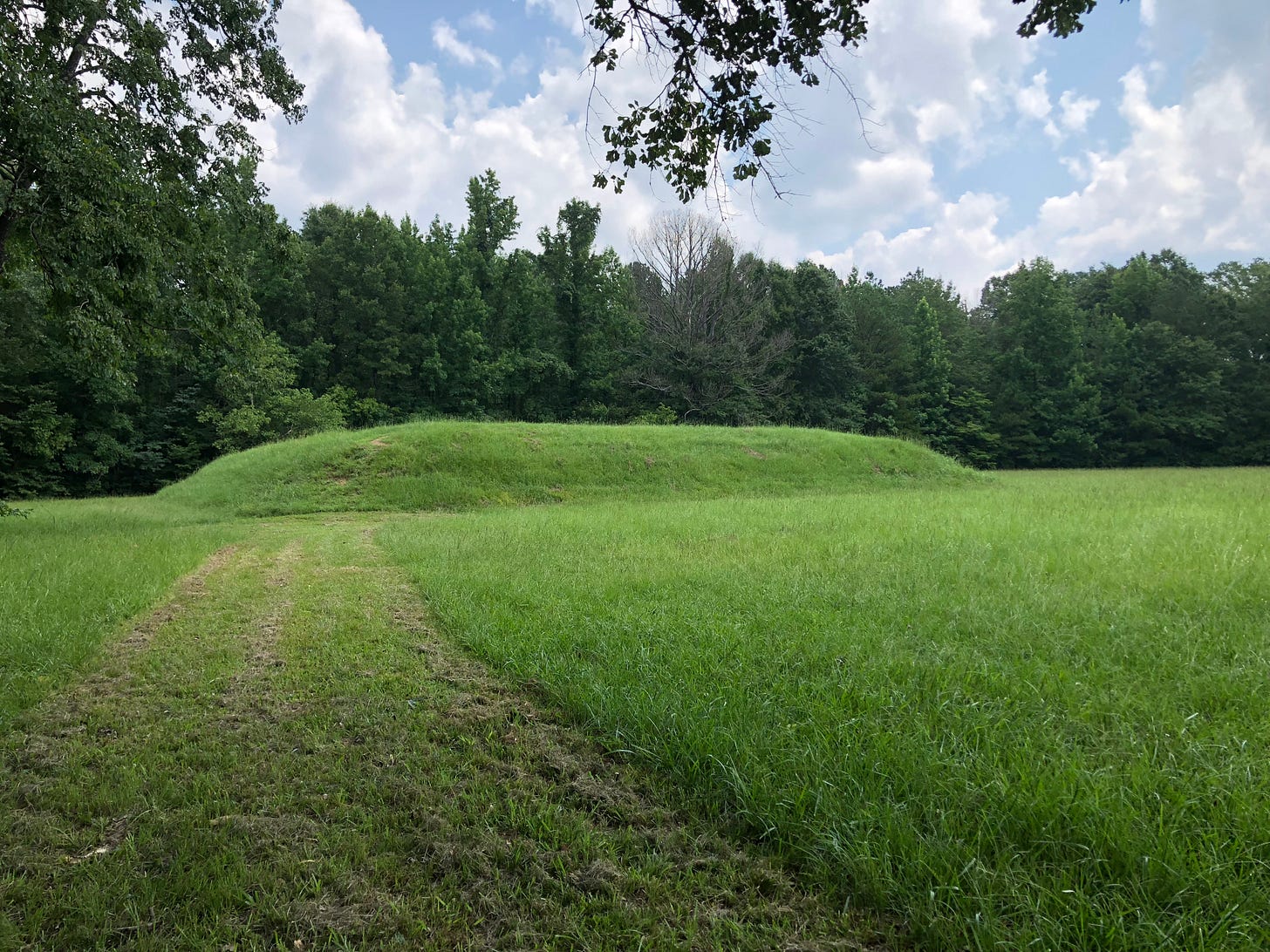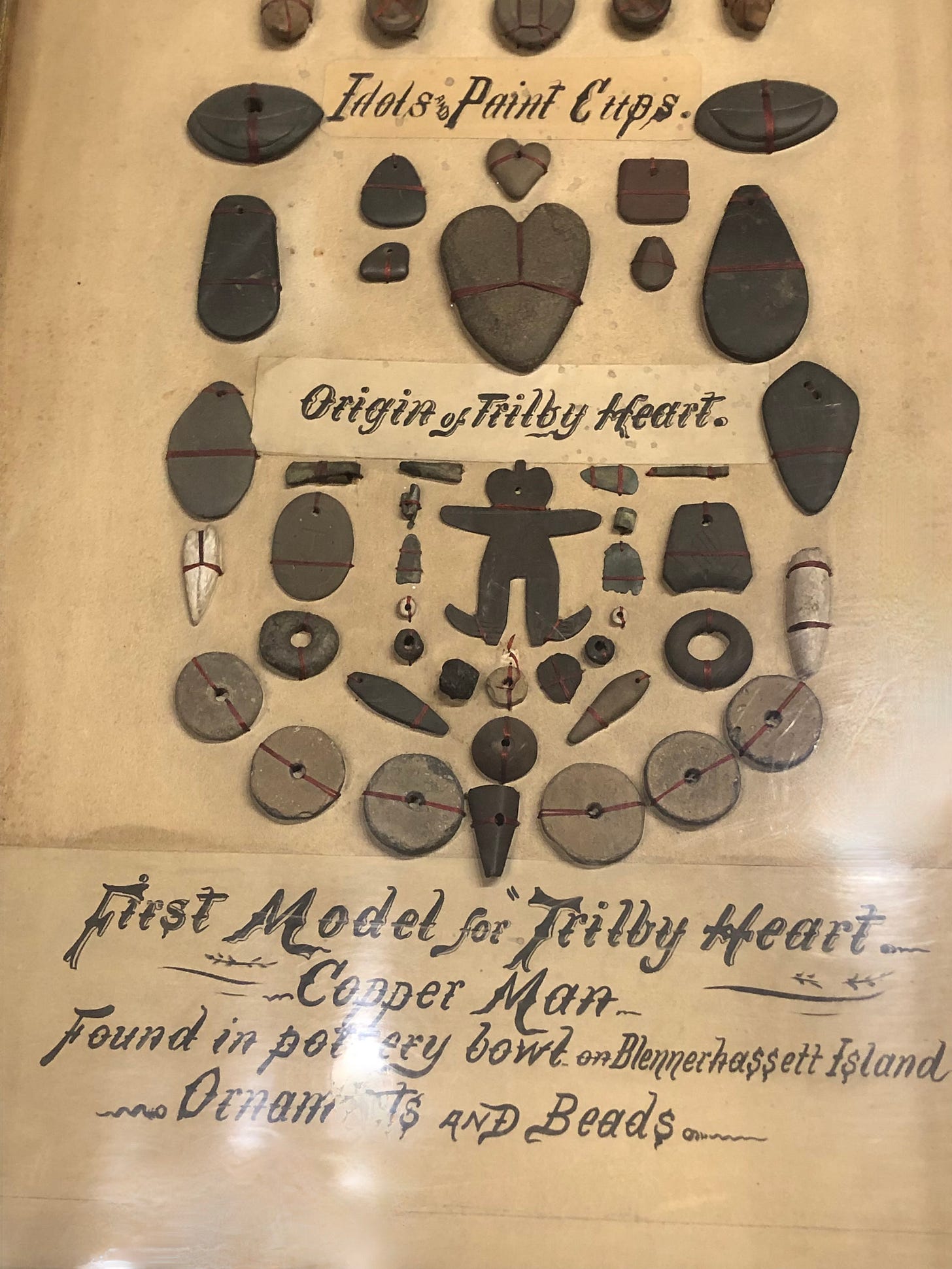Museum Labels on Textile Artifacts
I love studying the mysteries of early civilizations (including speculative histories that involve extra-terrestrial visitors or a race of giants) who built enormous edifices long ago. There is a lot we don’t know about the things our ancestors left behind. But, there is lots to discern from observation and experience.

The first mound I visited is in Arkansas, it is from the Hopewell Civilization and is called Plum Bayou. It was once called Toltec Mound. 1 We have traveled to ancient mounds all over the United States, ( and also the UK) most are found along major waterways. I am fascinated with them, and we try to visit one every time we take a road trip.2
Most of these sites are managed by local volunteers and have small visitor centers with exhibits of artifacts and speculative dioramas. Like many similar institutions, glass cases with arrowheads and clay pots are lined up under bright lights. In each display case, there will always be found small clay or stone disks with a hole in the center.

Most of the time, these disks will be labeled as decorative or ceremonial beads.3 But, if you saw the same shaped item in a tiny historilogical museum in the UK, the small ones would always be labeled as whorls for spindles, and the large ones as loom weights.4 If you want some serious spindle lore look no further than The Threads of Time (previously the Evangelical Church of Distaff Spinning) for good content.
Connections through time
Here is the wonderful thing, fabric perishes over time and archeologist, bless them, rarely find examples of actual textile, nevertheless, they do find the tools. Whorls pop up all over the world, universally round and pierced with a hole to accept a wooden stick. Humans seemed to have come up with this idea during the Neolithic Era and continued to use this method well into the Modern Era. Experiential Archeology is an area of study in which replica tools are made and used as a way of finding out more about the ancient tools.
When I pick up my delicately carved wooden spindles and slide on a whorl, I am linking my hands and my work to women whose descendants might just be in my next workshop!
Instructions for living a life:
Pay attention.
Be astonished.
Tell about it.
Mary Oliver
UPCOMING EVENTS
Open Studio: Friday and Saturday, August 7th and 8th 10am - 2pm
Come spend some time in a politics-free space with folks who make things and ask good questions. The tea kettle is always on, and there are snacks.
Looking ahead: Victoria Owens will join us Saturday August 16th with a presentation about dyeing wool and silk with lichens. Not to be missed, she is a master dyer!
There are still seats available in the Spiderweb Loom Weaving Workshop on September 4th.
And, be sure to come celebrate my end-of-residency Art Show: 5 - 8pm on August 30! There will be live music and good fun.
Why? because the anglo-europeans settlers who “discovered” it, were convinced that Montezuma had traveled from Mexico City to Arkansas to build it. The local indigenous folks (exhausted from warfare and displacement) were believed to have been incapable of building something so impressive.
Ancient Mounds I have loved: Cahokia in Illinois, Poverty Point in Louisiana, Spiro Mounds in Oklahoma, Serpent Mound in Ohio, plus a large assortment along the Natchez Trace as well as the Ohio River. Go see one! report back to us! I have not made it to Caddo Mounds in Texas, yet, but it is probably the most vibrant of all the sites because the descendants of the builders are also the caretakers.
Many of the museums will label the disks as weights for fish nets, which makes more sense than the vague term: bead.
Warp weighted looms are a a whole other subject.






